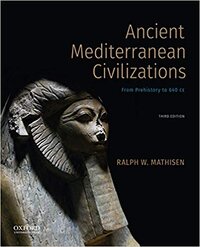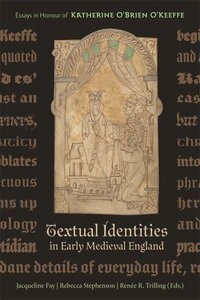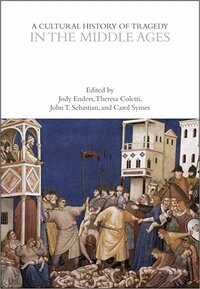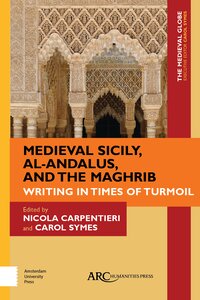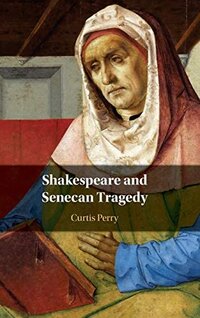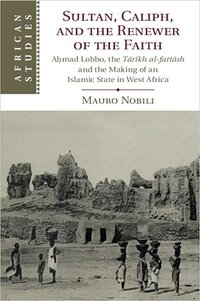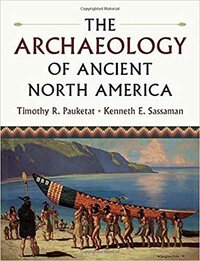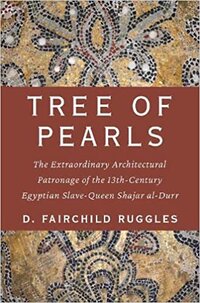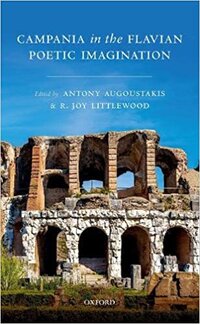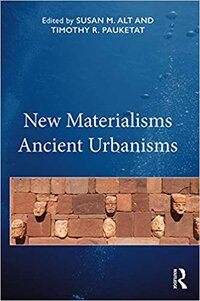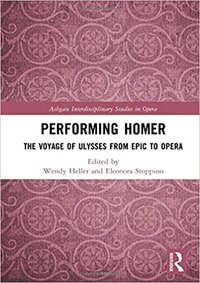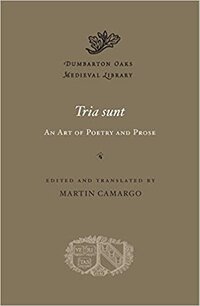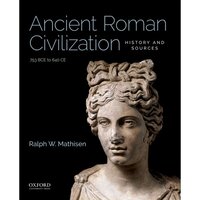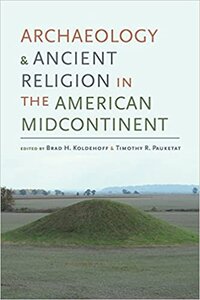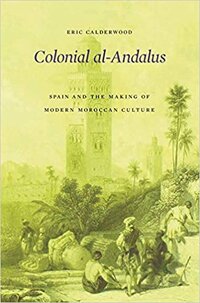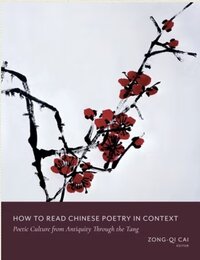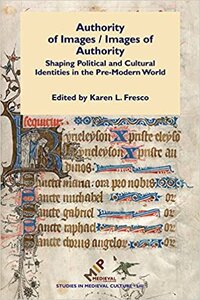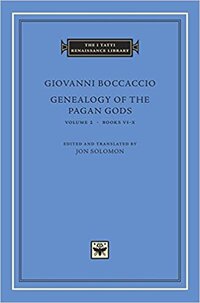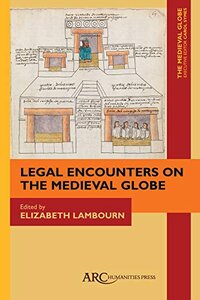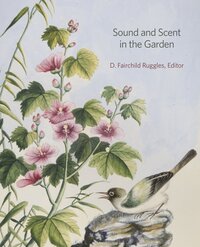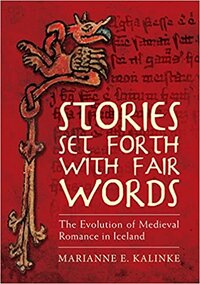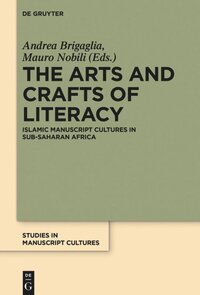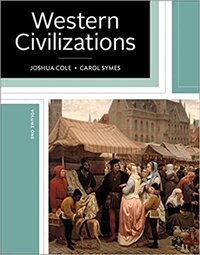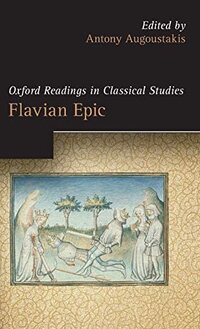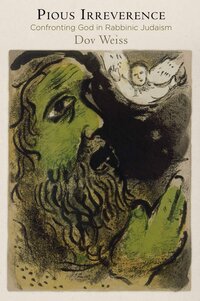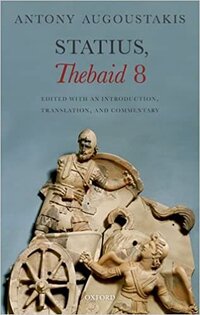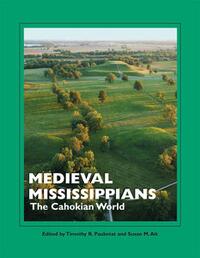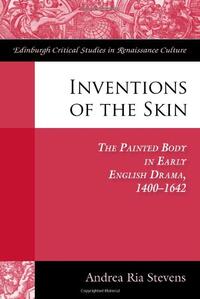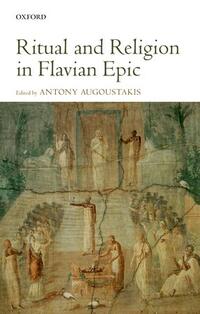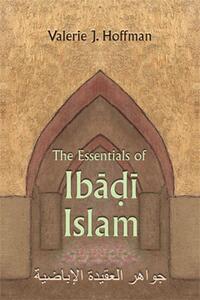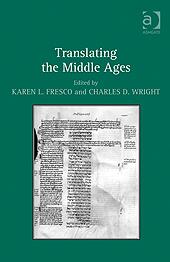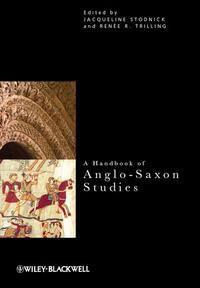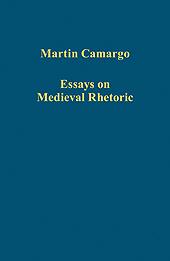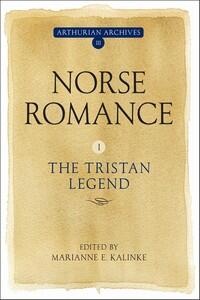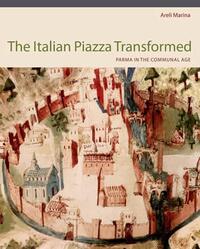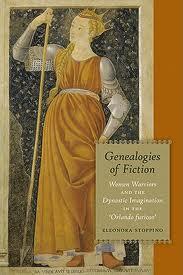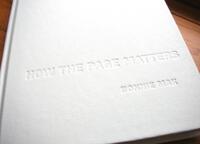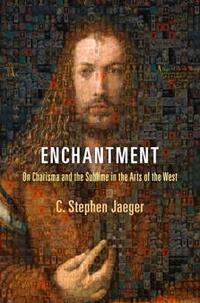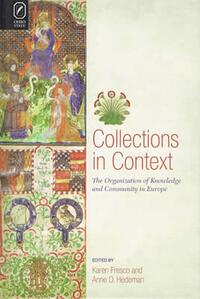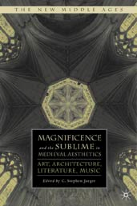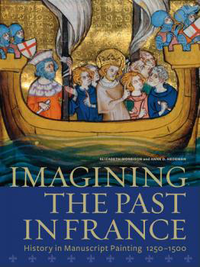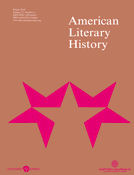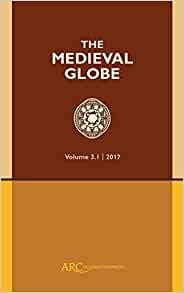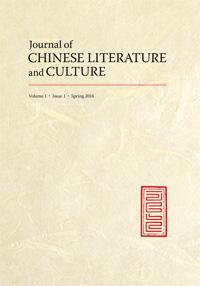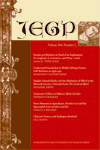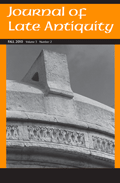Ralph W. Mathisen, Ancient Mediterranean Civilizations: From Prehistory to 640 CE (Oxford University Press, 2020).
Challenging the stereotypes and myths that typically characterize students' understanding of antiquity, Ancient Mediterranean Civilizations: From Prehistory to 640 CE, Third Edition, focuses on continuity and connections, along with cultural diffusion and cultural diversity, to show how history is a cumulative process and that numerous similar themes recur in different times and places. The text also explores sensitive issues and debates including attitudes toward race, ethnicity, and tolerance; gender issues and roles; slavery; social mobility; religion; political evolution; the nature of government; and imperialism.
Textual Identities in Early Medieval England: Essays in Honour of Katherine O'Brien O'Keeffe, eds. Rebecca Stephenson, Jacqueline Fay and Renée R. Trilling (D.S. Brewer, 2022).
Throughout her career, Professor Katherine O'Brien O'Keeffe has focused on the often-overlooked details of early medieval textual life, moving from the smallest punctum to a complete reframing of the humanities' biggest questions. In her hands, the traditional tools of medieval studies -- philology, paleography, and close reading - become a fulcrum to reveal the unspoken worldviews animating early medieval textual production. The essays collected here both honour and reflect her influence as a scholar and teacher. They cover Latin works, such as the writings of Prudentius and Bede, along with vernacular prose texts: the Pastoral Care, the OE Boethius, the law codes, the Anglo-Saxon Chronicle, and Ælfric's Lives of Saints. The Old English poetic corpus is also considered, with a focus on less-studied works, including Genesis and Fortunes of Men. This diverse array of texts provides a foundation for the volume's analysis of agency, identity, and subjectivity in early medieval England; united in their methodology, the articles in this collection all question received wisdom and challenge critical consensus on key issues of humanistic inquiry, among them affect and embodied cognition, sovereignty and power, and community formation.
A Cultural History of Tragedy In The Middle Ages, eds. Enders, J., Coletti, T., Sebastian, J. T., & Symes, C. (Bloomsbury Academic, 2020).
Historically, scholars have largely endorsed the truism that there was no such thing as medieval tragedy, a genre long believed to have died between 500 and 1500 as it awaited its literal Renaissance rebirth. Now, for the first time, a distinguished group of authors comes forward to recalibrate our thinking by rewriting the cultural history of tragedy in the Middle Ages. Reports of the so-called death of medieval tragedy, they argue, have been greatly exaggerated; and, for the Middle Ages, the stakes couldn’t be higher. Eight essays offer a blueprint for future study as they take up the extensive but much-neglected medieval engagement with tragic genres, modes, and performances from the vantage points of gender, politics, theology, history, social theory, anthropology, philosophy, economics, and media studies. The result? A recuperated medieval tragedy that is as much a branch of literature as it is of theology, politics, law, or ethics and which, at long last, rejoins the millennium-long conversation about one of the world’s most enduring art forms.
Each chapter takes a different theme as its focus: forms and media; sites of performance and circulation; communities of production and consumption; philosophy and social theory; religion, ritual and myth; politics of city and nation; society and family, and gender and sexuality. As a whole, the volume provides a panoramic view rich in spatial, temporal, formal, and contextual concerns.
Medieval Sicily, al-Andalus, and the Maghrib: Writing in Times of Turmoil, eds. Nicola Carpentieri and Carol Lynne Symes (Arc Humanities Press, 2020).
This book explores a millennium of literary exchanges among the peoples of the Maghrib, or westernmost strongholds of medieval Islam. In the seventh century, Muslim expansion into the western Mediterranean initiated a new phase in the layering of heterogeneous peoples and languages in this contact zone: Arabs and Berbers, Christians and Jews, Sunnī and Shīʿa Muslims, Greeks and Latins all helped shape identities, hybrid genealogies of knowledge, and political alliances. These essays excavate the literary artefacts produced in these times of turmoil, offering new perspectives on the intellectual networks and traditions that proved instrumental in overcoming the often traumatic transitions among political and/or religious regimes.
Curtis Perry, Shakespeare and Senecan Tragedy (Cambridge University Press, 2020).
Shakespeare's tragic characters have often been seen as forerunners of modern personhood. It has been assumed that Shakespeare was able to invent such lifelike figures in part because of his freedom from the restrictions of classical form. Curtis Perry instead argues that characters such as Hamlet and King Lear have seemed modern to us in part because they are so robustly connected to the tradition of Senecan tragedy. Resituating Shakespearean tragedy in this way - as backward looking as well as forward looking - makes it possible to recover a crucial political dimension. Shakespeare saw Seneca as a representative voice from post-republican Rome: in plays such as Coriolanus and Othello he uses Senecan modes of characterization to explore questions of identity in relation to failures of republican community. This study has important implications for the way we understand character, community, and alterity in early modern drama.
Mauro Nobili, Sultan, Caliph, and the Renewer of the Faith: Aḥmad Lobbo, the Tārīkh al-fattāsh and the Making of an Islamic State in West Africa (Cambridge University Press, 2020).
The Tārīkh al-fattāsh is one of the most important and celebrated sources for the history of pre-colonial West Africa, yet it has confounded scholars for decades with its inconsistencies and questions surrounding its authorship. In this study, Mauro Nobili examines and challenges existing theories on the chronicle, arguing that much of what we have presumed about the work is deeply flawed. Making extensive use of previously unpublished Arabic sources, Nobili demonstrates that the Tārīkh al-fattāsh was in fact written in the nineteenth century by a Fulani scholar, Nūḥ b. al-Ṭāhir, who modified pre-existing historiographical material as a political project in legitimation of the West African Islamic state known as the Caliphate of Ḥamdallāhi and its founding leader Aḥmad Lobbo. Contextualizing its production within the broader development of the religious and political landscape of West Africa, this study represents a significant moment in the study of West African history and of the evolution of Arabic historical literature in Timbuktu and its surrounding regions.
Timothy R Pauketat and Kenneth E Sassaman, The Archaeology of Ancient North America (Cambridge University Press, 2020).
This volume surveys the archaeology of Native North Americans from their arrival on the continent 15,000 years ago up to contact with European colonizers. Offering rich descriptions of monumental structures, domestic architecture, vibrant objects, and spiritual forces, Timothy R. Pauketat and Kenneth E. Sassaman show how indigenous people shaped both their history and North America's many varied environments. They place the student in the past as they trace how Native Americans dealt with challenges such as climate change, the rise of social hierarchies and political power, and ethnic conflict. Written in a clear and engaging style with a compelling narrative, The Archaeology of Ancient North America presents the grand historical themes and intimate stories of ancient Americans in full, living color.
D. Fairchild Ruggles, Tree of Pearls: The Extraordinary Architectural Patronage of the 13th-Century Egyptian Slave-Queen Shajar al-Durr (Oxford University Press, 2020).
The woman known as "Tree of Pearls" ruled Egypt in the summer of 1250. A rare case of a woman sultan, her reign marked the shift from the Ayyubid to the Mamluk dynasty, and her architectural patronage of two building complexes had a lasting impact on Cairo and on Islamic architecture. Rising to power from slave origins, Tree of Pearls-her name in Arabic is Shajar al-Durr-used her wealth and power to add a tomb to the urban madrasa (college) that had been built by her husband, Sultan Salih, and with this innovation, madrasas and many other charitably endowed architectural complexes became commemorative monuments, a practice that remains widespread today. This was the first occasion in Cairo in which a secular patron's relationship to his architectural foundation was reified through the actual presence of his body. The tomb thus profoundly transformed the relationship between architecture and its patron, emphasizing and emblematizing his historical presence. Indeed, the characteristic domed skyline of Cairo that we see today is shaped by such domes that have kept the memory of their named patrons visible to the public eye. This dramatic transformation, in which architecture came to embody human identity, was made possible by the sultan-queen Shajar al-Durr, a woman who began her career as a mere slave-concubine. Her path-breaking patronage contradicts the prevailing assumption among historians of Islam that there was no distinctive female voice in art and architecture.
Campania in the Flavian Poetic Imagination, eds. Antony Augoustakis and R. Joy Littlewood (Oxford University Press, 2019).
The region of Campania with its fertility and volcanic landscape was greatly influential on the Roman cultural imagination. The Bay of Naples was a centre outside the city of Rome, a place of otium, leisure and quiet, repose and literary productivity. And yet this is also a place of danger: Vesuvius inspires the inhabitants with fear and awe and, in addition to the majestic presence of the mountain, the Phlegraean Fields evoke the story of the gigantomachy, whilst sulphurous lakes invite entry to the Underworld. For the Flavian writers, in particular, Campania becomes a locus for literary activity and geographical disaster. In 79 CE, the eruption of Vesuvius annihilates a great expanse of the region, burying under a mass of ash and lava the cities of Pompeii, Herculaneum, and Stabiae. In the aftermath of such tragedy the writers examined in this volume, Martial, Silius Italicus, Statius, and Valerius Flaccus, continue to live, work, and write about Campania, an alluring region of luxury and peril.
New Materialisms Ancient Urbanisms, eds. Susan M. Alt and Timothy R. Pauketat (Routledge, 2019).
The future of humanity is urban, and knowledge of urbanism's deep past is critical for us all to navigate that future. The time has come for archaeologists to rethink this global phenomenon by asking what urbanism is and, more to the point, was. Can we truly understand ancient urbanism by only asking after the human element, or were the properties and qualities of landscapes, materials, and atmospheres equally causal? The ten authors of New Materialisms Ancient Urbanisms seek less anthropocentric answers to questions about the historical relationships between urbanism and humanity in Africa, Asia, and the Americas. They analyze the movements and flows of materials, things, phenomena, and beings--human and otherwise--as these were assembled to produce the kinds of complex, dense, and stratified relationships that we today label urban. In so doing, the book emerges as a work of both theory and historical anthropology. It breaks new ground in the archaeology of urbanism, building on the latest 'New Materialist, ' 'relational-ontological, ' and 'realist' trends in social theory. This book challenges a new generation of students to think outside the box, and provides scholars of urbanism, archaeology and anthropology with a fresh perspective on the development of urban society.
Performing Homer: The Voyage of Ulysses from Epic to Opera, eds. Eleonora Stoppino and Wendy Heller (Routledge Taylor & Francis Group, 2019).
The epic poems the Iliad and the Odyssey, attributed to Homer, are among the oldest surviving works of literature derived from oral performance. Deeply embedded in these works is the notion that they were intended to be heard: there is something musical about Homer's use of language and a vivid quality to his images that transcends the written page to create a theatrical experience for the listener. Indeed, it is precisely the theatrical quality of the poems that would inspire later interpreters to cast the Odyssey and the Iliad in a host of other media-novels, plays, poems, paintings, and even that most elaborate of all art forms, opera, exemplified by no less a work than Monteverdi's Il ritorno di Ulisse in patria. In Performing Homer: The Voyage of Ulysses from Epic to Opera, scholars in classics, drama, Italian literature, art history, and musicology explore the journey of Homer's Odyssey from ancient to modern times. The book traces the reception of the Odyssey though the Italian humanist sources—from Dante, Petrarch, and Ariosto—to the treatment of the tale not only by Monteverdi but also such composers as Elizabeth Jacquet de la Guerre, Gluck, and Alessandro Scarlatti, and the dramatic and poetic traditions thereafter by such modern writers as Derek Walcott and Margaret Atwood.
Tria sunt: An Art of Poetry and Prose, ed. Martin Camargo (Harvard University Press, 2019).
The Tria sunt, named for its opening words, was a widely used and highly ambitious book composed in England in the late fourteenth century during a revival of interest in the art of poetry and prose.
The backbone of this comprehensive guide to writing Latin texts is the wealth of illustrative and instructive sources compiled, including examples from classical authors such as Cicero and Horace as well as from medieval literature, and excerpts from other treatises of the same period by authors from Matthew of Vendôme through Gervase of Melkley. Topics treated at length include methods for beginning and ending a composition, techniques for expanding and abbreviating a text, varieties of figurative language, attributes of persons and actions, and the art of letter writing.
This anonymous treatise, related especially closely to work by Geoffrey of Vinsauf, served as a textbook for rhetorical composition at Oxford. Of all the major Latin arts of poetry and prose, it is the only one not previously edited or translated into English.
Ralph W Mathisen, Ancient Roman Civilization: History and Sources: 753 BCE to 640 CE (Oxford University Press, 2018).
Ancient Roman Civilization: History and Sources: 753 BCE to 640 CE integrates in a single volume both a historical narrative and parallel translated primary sources. The book's unifying theme of cultural confrontation--how the Romans interacted or engaged with a multitude of other Mediterranean, Asiatic, and African cultures--is interwoven throughout.
Archaeology and Ancient Religion in the American Midcontinent, eds. Brad Koldehoff and Timothy R. Pauketat (The University of Alabama Press, 2018).
Across North America, huge data accumulations derived from decades of cultural resource management studies, combined with old museum collections, provide archaeologists with unparalleled opportunities to explore new questions about the lives of ancient native peoples. For many years the topics of technology, economy, and political organization have received the most research attention, while ritual, religion, and symbolic expression have largely been ignored. This was often the case because researchers considered such topics beyond reach of their methods and data. In Archaeology and Ancient Religion in the American Midcontinent, editors Brad H. Koldehoff and Timothy R. Pauketat and their contributors demonstrate that this notion is outdated through their analyses of a series of large datasets from the midcontinent, ranging from tiny charred seeds to the cosmic alignments of mounds, they consider new questions about the religious practices and lives of native peoples. At the core of this volume are case studies that explore religious practices from the Cahokia area and surrounding Illinois uplands. Additional chapters explore these topics using data collected from sites and landscapes scattered along the Mississippi and Ohio River valleys. This innovative work facilitates a greater appreciation for, and understanding of, ancient native religious practices, especially their seamless connections to everyday life and livelihood. The contributors do not advocate for a reduced emphasis on technology, economy, and political organization; rather, they recommend expanding the scope of such studies to include considerations of how religious practices shaped the locations of sites, the character of artifacts, and the content and arrangement of sites and features. They also highlight analytical approaches that are applicable to archaeological datasets from across the Americas and beyond.
Eric Stickley Calderwood, Colonial al-Andalus: Spain and the Making of Modern Moroccan Culture (Belknap Press, 2018).
Through state-backed Catholicism, monolingualism, militarism, and dictatorship, Spain’s fascists earned their reputation for intolerance. It may therefore come as a surprise that 80,000 Moroccans fought at General Franco’s side in the 1930s. What brought these strange bedfellows together, Eric Calderwood argues, was a highly effective propaganda weapon: the legacy of medieval Muslim Iberia, known as al-Andalus. This legacy served to justify Spain’s colonization of Morocco and also to define the Moroccan national culture that supplanted colonial rule.
Writers of many political stripes have celebrated convivencia, the fabled “coexistence” of Christians, Muslims, and Jews in medieval Iberia. According to this widely-held view, modern Spain and Morocco are joined through their shared Andalusi past. Colonial al-Andalus traces this supposedly timeless narrative to the mid-1800s, when Spanish politicians and intellectuals first used it to press for Morocco’s colonization. Franco later harnessed convivencia to the benefit of Spain’s colonial program in Morocco. This shift precipitated an eloquent historical irony. As Moroccans embraced the Spanish insistence on Morocco’s Andalusi heritage, a Spanish idea about Morocco gradually became a Moroccan idea about Morocco.
Drawing on a rich archive of Spanish, Arabic, French, and Catalan sources—including literature, historiography, journalism, political speeches, schoolbooks, tourist brochures, and visual arts—Calderwood reconstructs the varied political career of convivencia and al-Andalus, showing how shared pasts become raw material for divergent contemporary ideologies, including Spanish fascism and Moroccan nationalism. Colonial al-Andalus exposes the limits of simplistic oppositions between European and Arab, Christian and Muslim, that shape current debates about European colonialism.
How to Read Chinese Poetry in Context: Poetic Culture from Antiquity Through the Tang, ed. Zong-Qi Cai (Columbia University Press, 2018).
How to Read Chinese Poetry in Context is an introduction to the golden age of Chinese poetry, spanning the earliest times through the Tang dynasty (618–907). It aims to break down barriers—between language and culture, poetry and history—that have stood in the way of teaching and learning Chinese poetry. Not only a primer in early Chinese poetry, the volume demonstrates the unique and central role of poetry in the making of Chinese culture.
Each chapter focuses on a specific theme to show the interplay between poetry and the world. Readers discover the key role that poetry played in Chinese diplomacy, court politics, empire building, and institutionalized learning; as well as how poems shed light on gender and women’s status, war and knight-errantry, Daoist and Buddhist traditions, and more. The chapters also show how people of different social classes used poetry as a means of gaining entry into officialdom, creating self-identity, fostering friendship, and airing grievances. The volume includes historical vignettes and anecdotes that contextualize individual poems, investigating how some featured texts subvert and challenge the grand narratives of Chinese history. Presenting poems in Chinese along with English translations and commentary, How to Read Chinese Poetry in Context unites teaching poetry with the social circumstances surrounding its creation, making it a pioneering and versatile text for the study of Chinese language, literature, history, and culture.
Authority of Images / Images of Authority: Shaping Political and Cultural Identities in the Pre-Modern World, ed. Karen L. Fresco (Medieval Institute Publications, 2017).
Focusing on language's political power, these essays discuss how representation, through language norms, plays and court spectacles, manipulations and adaptations of texts and images, both constitutes and reflects a cultural milieu. The volume brings together various disciplinary approaches, offering a complex appreciation of these questions. While a core of the essays focuses on France, the contributions engage a broad range of geographical contexts, from Byzantium to eastern Germany and England from the early centuries of the Common Era to the seventeenth century, revealing the prevalence and persistence of the key interconnected issues of images and authority.
Giovanni Boccaccio, Genealogy of the Pagan Gods, Vol. 2, ed. Jon Solomon (Harvard University Press, 2017).
Genealogy of the Pagan Gods by Giovanni Boccaccio (1313–1375) is an ambitious work of humanistic scholarship whose goal is to plunder ancient and medieval literary sources so as to create a massive synthesis of Greek and Roman mythology. The work also contains a famous defense of the value of studying ancient pagan poetry in a Christian world.
The complete work in fifteen books contains a meticulously organized genealogical tree identifying approximately 950 Greco-Roman mythological figures. The scope is enormous: 723 chapters include over a thousand citations from 200 Greek, Roman, medieval, and Trecento authors. Throughout the Genealogy, Boccaccio deploys an array of allegorical, historical, and philological critiques of the ancient myths and their iconography.
Much more than a mere compilation of pagan myths, the Genealogy incorporates hundreds of excerpts from and comments on ancient poetry, illustrative of the new spirit of philological and cultural inquiry emerging in the early Renaissance. It is at once the most ambitious work of literary scholarship of the early Renaissance and a demonstration to contemporaries of the moral and cultural value of studying ancient poetry.
Legal Encounters on the Medieval Globe, eds. Elizabeth Lambourn and Carol Symes (The Medieval Globe Book Series: Arc Humanities Press, 2017)
Law has been a primary locus and vehicle of contact across human history—as a system of ideas embodied in people and enacted on bodies; and also as a material, textual, and sensory “thing.” The seven essays gathered here analyze a variety of legal encounters on the medieval globe, ranging from South Asia to South and Central America, Africa, the Middle East, and Europe. Contributors uncover the people behind and within legal systems and explore various material expressions of law that reveal the complexity and intensity of cross-cultural contact in this pivotal era. Topics include comparative jurisprudence, sumptuary law, varieties of punishment, forms of documentation and legal knowledge, religious law, and encounters between imperial and indigenous legal systems. A featured source preserves an Ethiopian king’s legislation against traffic in Christian slaves, resulting from the intensifying African slave trade of the sixteenth century.
Sound and Scent in the Garden, ed. D Fairchild Ruggles (Harvard University Press, 2017)
While we often approach gardens as things to be seen—thus engaging the rational, intellectual part of the human brain—Sound and Scent in the Garden explores the more elusive experiences of sound and smell. These senses are important dimensions of garden design and performance and often have a powerful effect on the human body, yet they may also be ephemeral and difficult to study.
The contributors to the volume explore the sensory experience of gardens specifically as places where people encounter landscape in a staged manner, as a result of intentional design. How do the senses shape the experience of those places? In what ways are plants, gardens, and landscapes produced so as to stimulate the senses? What evidence do we have of historical sensory experiences? What is lost when we forget to acknowledge the sensory environment of the past or simply overlook its traces?
The volume demonstrates a wide variety of approaches to apply to the study of sensory history and illuminates this important dimension of the experience of gardens—past and present, East and West.
Marianne E. Kalinke, Stories Set Forth with Fair Words: The Evolution of Medieval Romance in Iceland (University of Wales Press, 2017).
This book is an investigation of the foundation and evolution of romance in Iceland. The narrative type arose from the introduction of French narratives into the alien literary environment of Iceland and the acculturation of the import to indigenous literary traditions. The study focuses on the oldest Icelandic copies of three chansons de geste and four of the earliest indigenous romances, both types transmitted in an Icelandic codex from around 1300. The impact of the translated epic poems on the origin and development of the Icelandic romances was considerable, yet they have been largely neglected by scholars in favour of the courtly romances. This study attests the role played by the epic poems in the composition of romance in Iceland, which introduced the motifs of the aggressive female wooer and of Christian-heathen conflict.
The Arts and Crafts of Literacy: Islamic Manuscript Cultures in Sub-Saharan Africa, eds. Andrea Brigaglia and Mauro Nobili (De Gruyter, 2017)
During the last two decades, the (re-)discovery of thousands of manuscripts in different regions of sub-Saharan Africa has questioned the long-standing approach of Africa as a continent only characterized by orality and legitimately assigned to the continent the status of a civilization of written literacy.
However, most of the existing studies mainly aim at serving literary and historical purposes, and focus only on the textual dimension of the manuscripts. This book advances on the contrary a holistic approach to the study of these manuscripts and gather contributions on the different dimensions of the manuscript, i.e. the materials, the technologies, the practices and the communities involved in the production, commercialization, circulation, preservation and consumption.
The originality of this book is found in its methodological approach as well as its comparative geographic focus, presenting studies on a continental scale, including regions formerly neglected by existing scholarship, provides a unique opportunity to expand our still scanty knowledge of the different manuscript cultures that the African continent has developed and that often can still be considered as living traditions.
Joshua Cole and Carol Lynne Symes, Western Civilizations: Their History & Their Culture (W.W. Norton & Company, 2017)
The balanced narrative in Western Civilizations has been bolstered with new and current scholarship—highlighting new environmental history, more coverage of Central and Eastern Europe, and increased coverage of European and Muslim relations—making it the most up-to-date and relevant text for students. In addition, Cole and Symes have enhanced their pedagogically innovative text with new History Skills Tutorials, Interactive Instructor's Guide, and Norton InQuizitive for History, making the Nineteenth Edition a more interactive and effective teaching and learning tool.
Flavian Epic, ed. Antonios Augoustakis (Oxford University Press, 2016)
The epics of the three Flavian poets--Silius Italicus, Statius, and Valerius Flaccus--have, in recent times, attracted the attention of scholars, who have re-evaluated the particular merits of Flavian poetry as far more than imitation of the traditional norms and patterns. Drawn from sixty years of scholarship, this edited collection is the first volume to collate the most influential modern academic writings on Flavian epic poetry, revised and updated to provide both scholars and students alike with a broad yet comprehensive overview of the field.
A wide range of topics receive coverage, and analysis and interpretation of individual poems are integrated throughout. The plurality of the critical voices included in the volume presents a much-needed variety of approaches, which are used to tackle questions of intertextuality, gender, poetics, and the social and political context of the period. In doing so, the volume demonstrates that by engaging in a complex and challenging intertextual dialogue with their literary predecessors, the innovative epics of the Flavian poets respond to contemporary needs, expressing overt praise, or covert anxiety, towards imperial rule and the empire.
Dov Weiss, Pious Irreverence: Confronting God in Rabbinic Judaism (University of Pennsylvania Press, 2016)
Judaism is often described as a religion that tolerates, even celebrates arguments with God. Unlike Christianity and Islam, it is said, Judaism endorses a tradition of protest as first expressed in the biblical stories of Abraham, Job, and Jeremiah. In Pious Irreverence, Dov Weiss has written the first scholarly study of the premodern roots of this distinctively Jewish theology of protest, examining its origins and development in the rabbinic age.
Weiss argues that this particular Jewish relationship to the divine is rooted in the most canonical of rabbinic texts even as he demonstrates that in ancient Judaism the idea of debating God was itself a matter of debate. By elucidating competing views and exploring their theological assumptions, the book challenges the scholarly claim that the early rabbis conceived of God as a morally perfect being whose goodness had to be defended in the face of biblical accounts of unethical divine action. Pious Irreverence examines the ways in which the rabbis searched the words of the Torah for hidden meanings that could grant them the moral authority to express doubt about, and frustration with, the biblical God. Using characters from the Bible as their mouthpieces, they often challenged God's behavior, even in a few remarkable instances, envisioning God conceding error, declaring to the protestor, "You have taught Me something; I will nullify My decree and accept your word."
Statius' Thebaid 8: Edited with an Introduction, Translation, and Commentary, ed. Antonios Augoustakis (Oxford University Press, 2016).
In this volume, Augoustakis presents the first full-length edition of Thebaid 8, with text and apparatus criticus, and an English translation. A detailed introduction discusses the Argive/Theban myth in the Greek and Roman literary tradition and art, as well as the reception of the book in subsequent centuries, especially in Dante's Divine Comedy. The accompanying commentary provides useful notes which explore questions of interpretation and Statius' language and literary craft, with particular emphasis on the exploitation of various Greek and Latin intertexts in Statius' poetry.
Medieval Mississippians, ed. Timothy Pauketat (with Susan A. Alt, Indiana Univ) (SAR Press, 2015).
Medieval Mississippians, the eighth volume in the award-winning Popular Archaeology Series, introduces a key historical period in pre-Columbian eastern North America—the “Mississippian” era—via a series of colorful chapters on places, practices, and peoples written from Native American and non-Native perspectives on the past. The volume lays out the basic contours of the early centuries of this era (AD 1000–1300) in the Mississippian heartland, making connections to later centuries and contemporary peoples. Cahokia the place and Cahokian social history undergird the book, but Mississippian material culture, landscapes, and descendants are highlighted, presenting a balanced view of the Mississippian world.
Andrea Stevens, Inventions of the Skin: The Painted Body in Early English Drama 1400- 1642 (Edinburgh Univ. Press, 2013).
Inventions of the Skin illuminates a history of the stage technology of paint that extends backward to the 1460s York cycle and forward to the 1630s. Organized as a series of studies, the four chapters of this book examine goldface and divinity in York's Corpus Christi play, with special attention to the pageant representing The Transfiguration of Christ; bloodiness in Elizabethan and Jacobean drama, specifically blood's unexpected role as a device for disguise in plays such as Look About You (anon.) and Shakespeare's Coriolanus; racial masquerade within seventeenth-century court performances and popular plays, from Ben Jonson's Masque of Blackness to William Berkeley's The Lost Lady; and finally whiteface, death, and "stoniness" in Thomas Middleton's The Second Maiden’s Tragedy and Shakespeare's The Winter’s Tale. Recovering a crucial grammar of theatrical representation, this book argues that the onstage embodiment of characters—not just the words written for them to speak—forms an important and overlooked aspect of stage representation.
Ritual and Religion in Flavian Epic, ed. Antony Augoustakis (Oxford Univ. Press, 2013).
This edited collection addresses the role of ritual representations and religion in the epic poems of the Flavian period (69-96 CE): Valerius Flaccus' Argonautica, Silius Italicus' Punica, Statius' Thebaid, and the unfinished Achilleid. Drawing on various modern studies on religion and ritual, and the relationship between literature and religion in the Greco-Roman world, it explores how we can interpret the poets' use of the relationship between gods and humans, cults and rituals, religious activities, and the role of the seer / prophet and his identification with poetry.
Divided into three major sections, the volume includes essays on the most important religious activities (prophecy or augury, prayers and hymns) and the relationship between religion and political power under the Flavian emperors. It also addresses specific episodes in Flavian epic which focus on religious activities associated with the dead and the Underworld, such as purification, necromancy, katabasis, suicide, and burial. It finally explores the role of gender in ritual and religion.
Valerie J. Hoffman, Essentials of Ibadi Islam (Syracuse Univ. Press, 2013).
"Ibadi Islam played a pivotal role in the history of Islamic thought and practice, and continues to be an influential force in the contemporary Middle East and Africa. This book is of real importance to the study of Islam and religions in general."—Brannon Wheeler, author of Mecca and Eden: Ritual, Relics, and Territory in Islam
Translating the Middle Ages, ed. Karen Fresco and Charles D. Wright (Ashgate, 2012).
Drawing on approaches from literary studies, history, linguistics, and art history, and ranging from Late Antiquity to the sixteenth century, this collection views 'translation' broadly as the adaptation and transmission of cultural inheritance. The essays explore translation in a variety of sources from manuscript to print culture and the creation of lexical databases. Several essays look at the practice of textual translation across languages, including the vernacularization of Latin literature in England, France, and Italy; the translation of Greek and Hebrew scientific terms into Arabic; and the use of Hebrew terms in anti-Jewish and anti-Muslim polemics. Other essays examine medieval translators' views and performance of translation, looking at Lydgate's translation of Greek myths through mental images rendered through rhetorical figures or at how printing transformed the rhetoric of intervernacular translation of chivalric romances. This collection also demonstrates translation as a key element in the construction of cultural and political identity in the Fet des Romains and Chester Whitsun Plays, and in the papacy's efforts to compete with Byzantium by controlling the translation of Greek writings.
A Handbook of Anglo-Saxon Studies, ed. Jacqueline Stodnick and Renée Trilling (Wiley, 2012).
“Neither Modern Critical Theory nor Anglo-Saxon Studies is past its ‘best before’ date. The contributions to this book combine authoritative knowledge of many aspects of Anglo-Saxon culture with a diversity of interpretative perspectives. Meticulous analysis of the material within a framework of concentrated, reflective approaches continues to generate stimulating new insights and appreciation.”—John Hines, Cardiff University
Martin Camargo, Essays on Medieval Rhetoric (Ashgate, 2012).
Reprint of thirteen of Martin Camargo's essays in the Variorum Collected Studies Series.
Marianne Kalinke, Norse Romance I: The Tristan Legend; II: The Knights of the Round Table; III: Hærra Ivan (paperback reissues, Boydell & Brewer, 2012).
Areli Marina, The Italian Piazza Transformed: Parma in the Communal Age (Penn State Univ. Press, 2012).
"There is no doubt that this is a significant contribution to the field . . . an exemplary presentation of extremely complex historical processes. The scholarship is formidable."
--Charles Burroughs, Case Western Reserve University
Eleonora Stoppino, Genealogies of Fiction: Women Warriors and the Dynastic Imagination in the "Orlando furioso" (Fordham Univ. Press, 2011).
Tracing the formation of the character of the warrior woman, from the amazon to Bradamante, the book analyzes the process of gender construction in early modern Italy. By reading the tension between the representations of women as fighters, lovers, and mothers, this study shows how the warrior woman is a symbolic center for the construction of legitimacy in the complex web of fears and expectations of the Northern Italian Renaissance court.
From handwritten texts to online books, the page has been a standard interface for transmitting knowledge for over two millennia. It is also a dynamic device, readily transformed to suit the needs of contemporary readers. In How the Page Matters, Bonnie Mak explores how changing technology has affected the reception of visual and written information.
Mak examines the fifteenth-century Latin text Controversia de nobilitate in three forms: as a manuscript, a printed work, and a digital edition. Transcending boundaries of time and language, How the Page Matters connects technology with tradition using innovative new media theories. While historicizing contemporary digital culture and asking how on-screen combinations of image and text affect the way conveyed information is understood, Mak's elegant analysis proves both the timeliness of studying interface design and the persistence of the page as a communication mechanism.
C. Stephen Jaeger, Enchantment: On Charisma and the Sublime in the Arts of the West (Univ. of Pennsylvania Press, 2012).
"C. Stephen Jaeger's magnificent, generous, and wide-ranging study has at its heart all that which is life-affirming. At every turn we encounter vigorous, eloquent, and intellectually consistent challenges to the division of art and experience. Readers in and between many disciplines will find this deeply perceptive account of the magical workings of enchantment, charisma, and the sublime in texts, images and bodies, empowering and uplifting. It cannot fail to influence the next generation of thought about the arts and media more generally."--Paul Binski, University of Cambridge
The following collections and special issues of journals derive from conferences and symposia sponsored by the Program and edited by Program faculty:
Collections in Context: The Organization of Knowledge and Community in Europe, ed. Karen Fresco and Anne D. Hedeman (Ohio State Univ. Press, 2010).
Includes fourteen essays drawn from a Medieval Studies conference at the University of Illinois and features contributions from seven UIUC scholars, including editors Karen Fresco (French) and Anne D. Hedeman (Art History, retired) as well as Paula Carns (University Library), Erin Donovan (Art History), Marcus Keller (French), Eleonora Stoppino (Italian, Spanish & Portuguese), and Carol Symes (History).
Magnificence and the Sublime in Medieval Aesthetics: Art, Architecture, Literature, Music, ed. C. Stephen Jaeger (New York: Palgrave Macmillan, 2010).
Additional publications and projects issuing in part from Medieval Studies sponsored or co-sponsored symposia and workshops at UIUC:
Imagining the Past in France: History in Manuscript Painting, 1250-1500, ed. Anne D. Hedeman and Elizabeth Morrison (J. Paul Getty Museum) (Getty Museum, 2010).
Medieval America, special issue of American Literary History 22 (Winter 2010).
Virtual Vellum: Toward Enhanced Understanding of Virtual Manuscripts, National Science Foundation Project, Co-PI Anne D. Hedeman, with Peter Bajcsy (NCSA) and Kevin Franklin (I-CHASS); a related NSF project, Digging into Image Data to Answer Authorship-Related Questions, includes a project on Fifteenth-Century French Manuscripts, Co-PIs Karen Fresco and Anne D. Hedeman.
Program faculty also edit or co-edit four major international Medieval Studies journals:
Journal of Chinese Literature and Culture (Zong-qi Cai)
JEGP: Journal of English and Germanic Philology (Renée R. Trilling, with Kirsten Wolf, Univ. of Wisconsin at Madison and Matthew Giancarlo, Univ. of Kentucky).
Journal of Late Antiquity (Ralph Mathisen, editor emeritus and founding editor; currently edited by Noel Lenski, Univ. of Colorado at Boulder).
